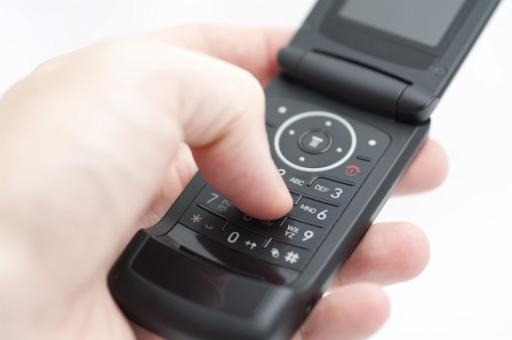
Cell phones started out as a big bag with a phone receiver at the cradled-on top. It had a strap where you could carry it and was roughly the size of a large purse. They were bulky, awkward, and had terrible, patchy, reception that sounded very static-y. The evolution of phones later brought us flip phones, which still weren’t that great because they came before the internet! What?! Remember that time in life when there was NO INTERNET!! It seems like a lifetime away . . . ahem, for those of us older folks, that is. But we must consider that they are now in their early 30’s who have lived their whole lives with smart phones.
Once smart phones hit the scene, no one wanted a flip phone anymore. They were looked down upon and considered outdated and old fashioned. So, life progressed as the smart phones did. The iPhone numbers keep getting higher and now you can have the iPhone 14 Pro Max, the ultimate in connectivity via phone, text, Twitter, Facebook, Messenger, Snapchat and the list goes on. As the phones and internet progressed, so did our obsession with them. To the point that I am concerned that the current generation of teens will not know how to function in society. They have trouble having a normal relaxed conversation with an adult. They don’t know how to look people in the eye when speaking to them. They mumble. They hide in their rooms or behind their screens at family gatherings instead of interacting with others sitting all around them. In the future will people just revert into being in their homes all the time because it is less scary? Online school didn’t help during COVID-19. During this time many young adults discovered that they could work from home as well, and never have to darken the door of their office or meet their teammates in person. And this was just fine with them.
That is why I was shocked but very proud when my daughter somewhere around the age of 17 decided to get rid of her iPhone and get a flip phone. What?! A kid willing giving up a smart device and initiating it on their own. Amazing!!! I was so stunned, I had to know why. When I asked her, this is what she said. . .
While working at her job she realized that every young person when not directly engaged in physically having to do something had their face in their phones. They spoke only what was minimally required to anyone who tried to communicate with them. There were no deep conversations, no humorous interactions, and not much conversation with them at all. She decided if she didn’t have access to the internet and all of it’s lures (texting, snap chatting, internet surfing, YouTube videos, and a plethora of other online attractions), then she wouldn’t be able to look at it all the time while she was in public. She could only look at those things at night before bed which would greatly limit her time online.
When she pulled her flip phone out to make a call and used her voice to have a conversation with someone, all her peers were intrigued. Some other kids asked, “What is that?!”. Others wanted to hold it to look at it. Some wanted their picture with it. So, the flip phone fad that had once been the rage, then almost became obsolete, suddenly was trendy. The kids asked questions about it and couldn’t believe that it didn’t connect to the internet.
The part that made me so proud of my daughter was the fact that she began talking to a lady at work who is older than me. She loved her and this sweet lady gave good advice and shared wisdom with her. She also talked to several other older employees and heard about their families and life experiences. What was amazing was my daughter was learning about life. She seemed more confident. She gained knowledge about gardening, family relationships, marriage, and many other life skills that she would have never known about on her own or found out about on the internet. Her kindness and empathy increased. She learned the joy of having a great conversation with a stranger. She realized all that she had been missing out with her face only focused on a screen. And she actually survived without having her phone in her face all the time.
I think all of this led her to be open to going to deliver some brownies to an elderly gentleman in town who lived alone and was missing his wife who was now in a nursing home. That initial conversation led to a friendship between the two – an 80-ish year-old gentleman and a young lady in her late teens. She would take him to the grocery store, they went on picnics at Graham Park, he got to talk about his wife and their life together, and he tried to teach her to fly a kite. What a beautiful friendship – one gaining human interaction and conversation, that he so desperately craved, and the other learning life skills and gaining experience in relationships. A win-win situation. So, I would encourage us all to put our phones down. You don’t have to go so far as reverting back to a flip phone, but you should learn how to live without your phone for periods of time each day so that you can live life, enjoy the moment, and interact with people around you. Phones can be just as addictive as a drug, and many young people struggle with this issue, as well as adults. Try putting your face up and watching the sunset, instead of taking a picture of it. Savor that moment. Stare at the horizon until the last bit of the sun is gone. Every meal, every event, every conversation does not need to be documented. Instead of recording it, just enjoy it happening. And who knows, you might start a trend where people interact with each other in person again.

 Often expressed is the concern that young people are not interested in learning because they are overly occupied on their cell phones and not reading books. However, young people today have never known life without a cell phone device. They use it for everything from scheduling to homework. Kids can learn to love learning while using their smartphones by taking advantage of its capabilities. Here are five suggestions.
Often expressed is the concern that young people are not interested in learning because they are overly occupied on their cell phones and not reading books. However, young people today have never known life without a cell phone device. They use it for everything from scheduling to homework. Kids can learn to love learning while using their smartphones by taking advantage of its capabilities. Here are five suggestions.